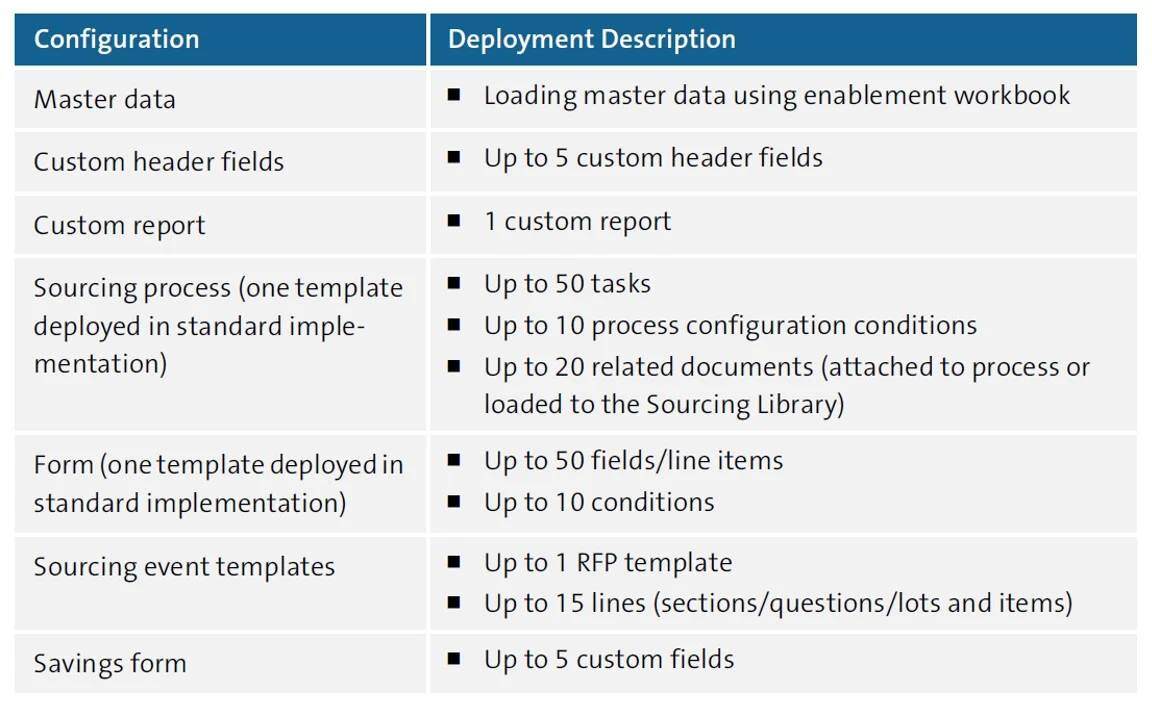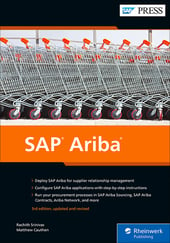The key to a successful implementation of SAP Ariba Sourcing is planning and stakeholder ownership. The SAP Ariba Sourcing team must be engaged to implement this solution.
Implementing SAP Ariba Sourcing follows the SAP Ariba on-demand deployment methodology, a methodology based on the SAP Activate methodology.
This blog post will provide an overview of the implementation methodology, calling out the different roles played by the SAP Ariba team and the customer team throughout the process.
The SAP Activate Methodology
The SAP Activate methodology consists of four phases: prepare, explore, realize, and deploy.
To implement the SAP Ariba Sourcing solution, the following roles are required on SAP Ariba side:
- SAP Ariba project manager
- SAP Ariba Sourcing functional lead
- SAP shared services lead
- SAP technical lead
- SAP integration lead
The following resources will be required on the customer side:
- Project sponsor
- Project manager
- Functional lead
- Subject matter experts (SMEs)
Let’s review the four phases in the SAP Ariba Sourcing deployment process that you must consider.
Prepare Phase
Just like preparing for an SAP S/4HANA migration, the Prepare phase is the first implementation phase for SAP Ariba Sourcing, usually after a discover phase that is completed by you and the SAP Ariba sales organization. The initial project scope, timeline, and budget are agreed upon during the discover phase.
The purpose of this prepare phase is to confirm value drivers, goals and objectives, project scope, and success metrics for a successful implementation. In this phase, the project team is identified. The project plan, project governance framework, issues and risk plan, and project roles and responsibilities matrix are defined and finalized with the customer.
Once the sign-off to the project charter is completed, the project kickoff is conducted with all the project stakeholders including the customer project sponsors, customer project team, and SAP Ariba team.
A typical deployment kickoff includes, but isn’t limited to, the following information that will be presented to all resources involved with the project:
- Section 1: Business goals and objectives, success criteria (content usually owned by customer and SAP Ariba value realization lead, where applicable)
- Section 2: Project methodology, overall timeline, and governance (content owned by SAP Ariba project manager)
- Section 3: Solution implementation framework, roles and responsibilities, and meeting schedules (content owned by SAP Ariba Sourcing lead)
Explore Phase
In the explore phase, the requirements gathering and design workshops are held to clearly document your requirements and pain points and to design future processes and global templates for deploying SAP Ariba Sourcing in your procurement landscape. The purpose of this phase is to confirm requirements and prepare your technical infrastructure.
Once the kickoff is complete, the requirements gathering and design breakout session will be conducted by SAP Ariba Sourcing lead. The requirements gathering and design workshops generally start off with a solution overview demonstration, followed by initial sessions and breakout sessions.
Once the breakout sessions are complete, consolidated sessions can bring together the newly designed processes, organizational change decisions, and policies and procedures defined for the sourcing processes. The integration session looks at the processes in the SAP Ariba Sourcing solution, emphasizing the end-to-end processes across the enterprise landscape.
The following key areas should be covered during your breakout sessions:
- Sourcing request blueprinting
- Custom fields required on sourcing request form
- Custom terms required on sourcing items document
- Tasks required to create and submit sourcing requests
- Tasks required to approve request and create sourcing project
- Sourcing project blueprinting
- Custom fields required on sourcing project header
- Type of RFx events required
- Collaborators, tasks, conditions and template questions required to initiate and execute a sourcing project, including the sourcing events associated with the sourcing project
- Tasks required to approve supplier selection and awards during each sourcing event
- Sourcing events blueprinting
- Content to be included in the sourcing event templates
- Custom terms to be defined for the items in the sourcing events
- Event rules to be defined
- Master data
- Master data to be loaded
- Master data refresh frequency and master data strategy
- Reporting
- Analytical report requirements
For effective breakout sessions, we strongly recommend you involve subject matter experts who have complete knowledge of current processes. These experts should be able to articulate the requirements and current pain points, should help map out future processes, and should have decision-making authority to choose the right options during the design sessions.
The usual scope during deployment is shown in the table below.

Note: The scope per deployment described can vary based on you’ve agreed upon with SAP Ariba sales. These changes should be defined in the statement of work (SOW).
Realize Phase
The purpose of this phase is to configure and test the solution. This phase begins immediately after you sign off on the business requirements document. Now, the SAP Ariba Sourcing team begins performing functional configuration in a test realm based on the documented requirements.
The SAP Ariba Sourcing functional lead works with the shared services lead to perform the following tasks:
- Create sourcing templates
- Define the sourcing request process and approval workflow
- Define the sourcing project process and approval workflows
- Define sourcing event content configurations, such as line item/lot configuration for RFIs, RFPs, and auction events
- Load master data
- This is data about suppliers, regions, departments, and purchasing organizations, and other necessary master data as specified in the enablement workbook defined during the explore phase
- Integrate with other solutions
- Work with the SAP integration lead and customer resources to enable integration to ERP (backend) solutions such as SAP ERP (if in scope).
Deploy Phase
The purpose of this phase is to go live and transition the customer to SAP Ariba support.
The deploy phase begins when you sign off on the user acceptance testing (UAT) developed during the realize phase. Now, you’re ready to deploy the new SAP Ariba Sourcing solution in your production environment. The SAP Ariba Sourcing lead will work with the SAP shared services lead and the SAP Ariba technical lead to migrate all configurations from your test environment to your production environment.
Conclusion
As you can see, preparing for an SAP Ariba Sourcing implementation takes a lot of work. This up-front cost is well worth the investment, however, as the documents and plans you create during the four SAP Activate methodology phases will dictate how your implementation goes.
Learn more about agile project delivery for SAP in this free chapter excerpt.
Editor’s note: This post has been adapted from a section of the book SAP Ariba by Rachith Srinivas and Matthew Cauthen.



Comments